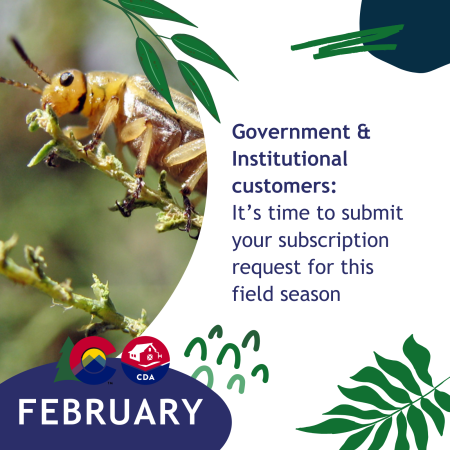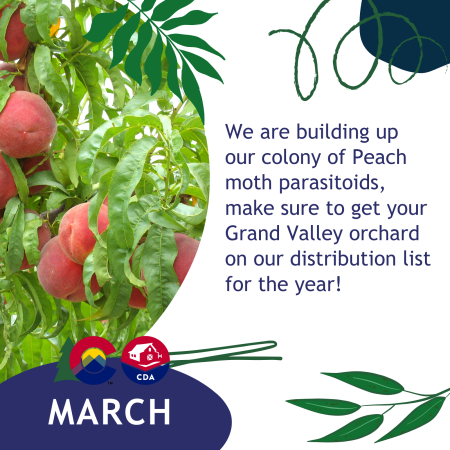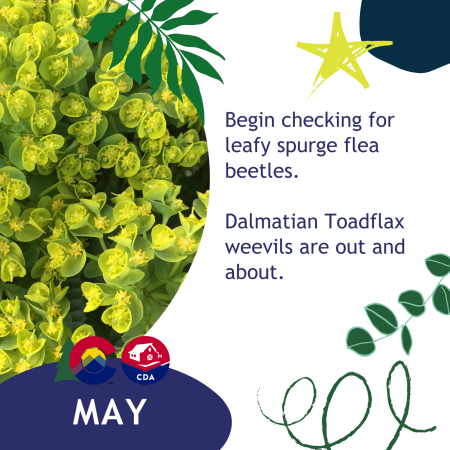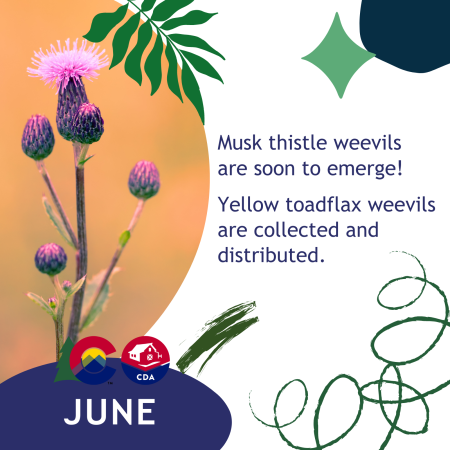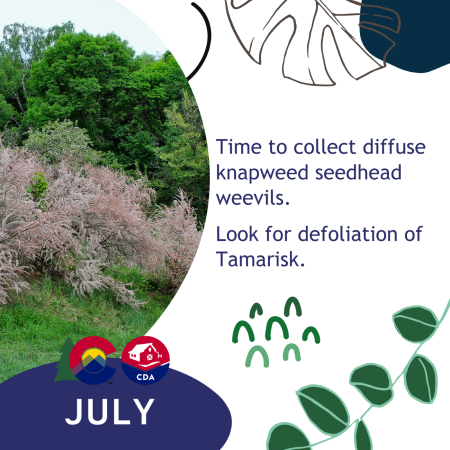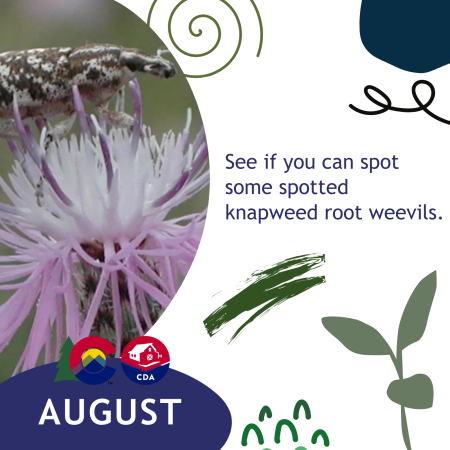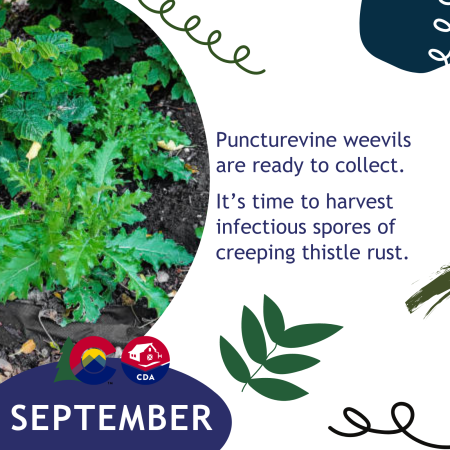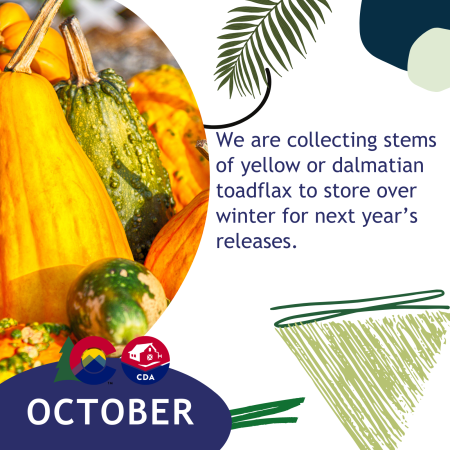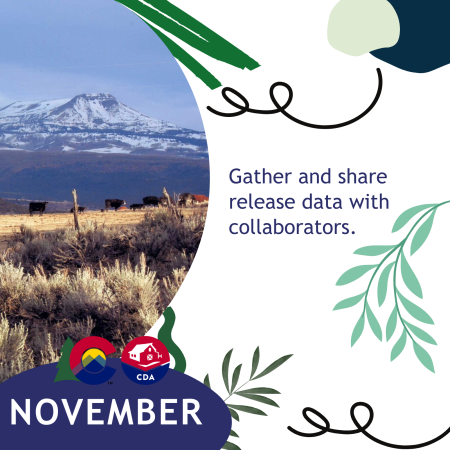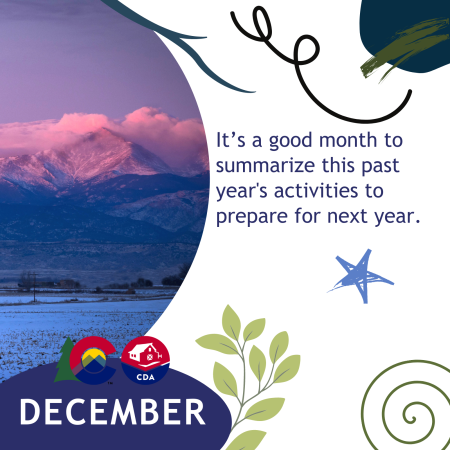Palisade Insectary
Biological control is a method of pest management that uses the natural enemies of weeds or pests. The Palisade Insectary imports, raises, researches, and distributes biological controls for the state of Colorado.
Successful biological pest control does three things:
- reduces costs
- cuts down on the amount of chemicals entering the environment
- establishes helpful insects for a natural, permanent pest control choice.
More than 90 insects and fungi have been studied and released for use since the Insectary was started in 1945.
Tours of the Insectary are available between September - March when our staff is not doing field project work. We can accommodate a maximum of 20 people and of course we do tours for private families or smaller groups as well. Call to arrange a tour at 970-464-7916, ext. 0.
What's Happening
Join us for the 80th Anniversary of the Palisade Insectary!
Join us as we celebrate the research and achievements of the Insectary. There will be food trucks, kid-friendly fun, and tours available.
Date: Thursday, August 14
Time: 4 pm to 7 pm
Location: Palisade Insectary (75037 8/10 Road, Palisade, CO 81526)
RSVP to the Insectary 80th Anniversary Celebration
The Insectary is getting new artwork. Up-close, large format photographs of our biological control agents are now on display. Our agents are not available year round and these photos are a great way to showcase the insects we work with.
The Palisade Insectary by month
January
Start off the year by making plans for this year's field season and get on request lists early.
February
Government & Institutional customers: It’s time to submit your subscription request for this field season
March
We are building up our colony of Peach moth parasitoids, make sure to get your Grand Valley orchard on our distribution list for the year!
April
It’s a good time to start looking for Creeping thistle stems infected with rust fungus. Russian knapweed agents ship this month. See us at the Palisade Honey Bee Festival!
May
Begin checking for leafy spurge flea beetles. Dalmatian Toadflax weevils are out and about.
June
Musk thistle weevils are soon to emerge! Yellow toadflax weevils are collected and distributed.
July
Time to collect diffuse knapweed seedhead weevils. Look for defoliation of Tamarisk.
August
See if you can spot some spotted knapweed root weevils.
September
Puncturevine weevils are ready to collect. It’s time to harvest infectious spores of creeping thistle rust.
October
We are collecting stems of yellow or dalmatian toadflax to store over winter for next year’s releases.
November
Gather and share release data with collaborators.
December
It’s a good month to summarize this past year's activities to prepare for next year.

